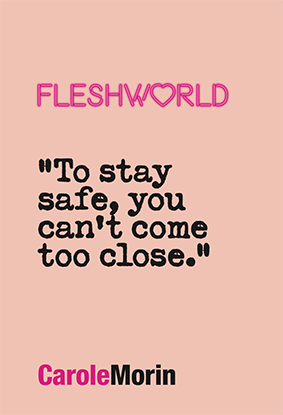Vivien Lash snoops about among the cosmetics and prosthetic leg of seductive original Frida Kahlo
The confident handwriting of Frida Kahlo’s diary watches over the entrance to the display of her possessions at London’s V&A in Frida Kahlo: Making Her Self Up. It almost doesn’t matter what’s written in Spanish; the words themselves seduce you. There is something evocative about ink on paper concealed within the pages of a journal.
Collected by Madonna, more famous than Tequila, Kahlo’s famous face with its monobrow and moustache is easily co-opted as feminist icon, female artist, wronged wife. But the Mexican-German Kahlo is full of seductive contradictions, like her simultaneously decorative and direct handwriting. The sexy cripple who painted, lived and loved in her four-poster bed is an original, not a symbol.
A decadent communist who painted the personal, not the political, she may have turned in her urn at the sight of Theresa May wearing a Kahlo bracelet at the Party Conference last year, waving it at the camera as she held up her hand to stifle a cough. But would Frida be amused by the shopping frenzy at the V&A gift shop?
Not successful in her own lifetime, Kahlo refused to be a shadow in the spotlight of her famous husband Diego Rivera — whom, Liz Taylor-style, she married twice. She refused to be a victim of either her broken body or his infidelities. Rivera fucked her favourite sister, while Frida used Trotsky to make him jealous, before “old Trot” was ice-picked by an assassin she had dinner with a few weeks before.
Kahlo did not want to be defined by her injuries when her spine was crushed and her pelvis impaled in a traffic accident. She made perverse jokes about losing her virginity to a trolley car. Doctors thought she would die, confined to her four-poster bed in the Blue House with her imaginary friend. But Frida transformed her self into art. Instead of dying, she danced. Her photographer father fitted a mirror to her bed so that she could draw herself. Eventually she lost her leg, already withered from childhood polio, but her imaginary friend stayed with her until the end of her life.
Identity is the root of all art. Perhaps in Kahlo, identity was the route to art — a crossdressing bisexual before it was fashionable, a communist with a collection of votive paintings, mentally strong but physically weak. Her work contains this duality. Her self-portraits often reveal two Fridas: the sick and the well, the bloodless and the bleeding, the European and the Mexican.
The Blue House, where she was born and died, is now a museum and one of Mexico City’s top attractions. But her bathroom was sealed on her death on orders from her husband. Opened half a century later, its contents are currently on display at the V&A.
Why did Diego Rivera exclude her bathroom when allowing the rest of the Blue House to become a museum? Perhaps he couldn’t bear anyone, including himself, to go into her private space and inspect her secrets? The cardboard box of Demerol, essential opiates for a lifetime of pain; the Ebony eyebrow pencil she used on her famous monobrow; the corsets painted with communist symbols that held her crushed spine together; her red lipsticks and red leg; and the big bottle of Shalimar are strangely moving.
Do material objects retain the essence of their owners? Did the Shalimar witness rows between the husband and wife?
Kahlo dressed in traditional Mexican costumes to show solidarity with the peasant class she wasn’t born into, and to hide her deformities. Maybe she just liked the parrot colors and dramatic Resplendors?
The glass cases of her Tehuana costumes didn’t interest me as much as the mutilated photographs found in her bathroom. Sometimes her own face is missing from the picture. Sometimes the faces of others are amputated from the frames like the gangrene cut out of her withered leg.
Kahlo cut off the front of her shoe when her toes rotted. I felt compelled to avert my eyes from this mutilated shoe; simultaneously moving closer, practically sniffing it. You can almost smell her Everything’s Rosy nail varnish and matching lipstick. Red was her color. The color of life, blood, communism. Her scarlet prosthetic leg stretching out of a red leather boot, decorated with bows and dragons and bells, is the star of this show. As her surrealist friend Andre Breton said, “The art of Frida Kahlo is a ribbon around a bomb.”
The contents of your bathroom perhaps reveal more than your diary. Beauty products, medicine, decapitated photographs are physical evidence of vanity, need, despair. My own bathroom is sacred; the manservant isn’t even allowed to clean it. Sometimes in the middle of the night, when I catch sight of myself in the gloom of the mirror, I think it’s my evil twin standing behind me.
I’ve always preferred snooping in bathrooms, trying other peoples’ products even though they tend to make me sneeze. So many bathrooms contain petrochemicals and potions scented with bergamot, a common allergen. Back last century, when Maddie took me “visiting,” she would tell me to take a look in the closet. What am I looking for? Anything interesting. If you get caught, just say you got lost on your way to the bathroom.
My tubercular toe, more accurate than the weather forecast, throbs before a thunderstorm and I become aware of it, peeping out of my vintage Manolos, as I leave Frida’s lipsticks behind in the V&A and walk home to Soho. As the thunderstorm starts, I can hear Kahlo saying, “I tried to drown my sorrows. But the bastards learned to swim.”


